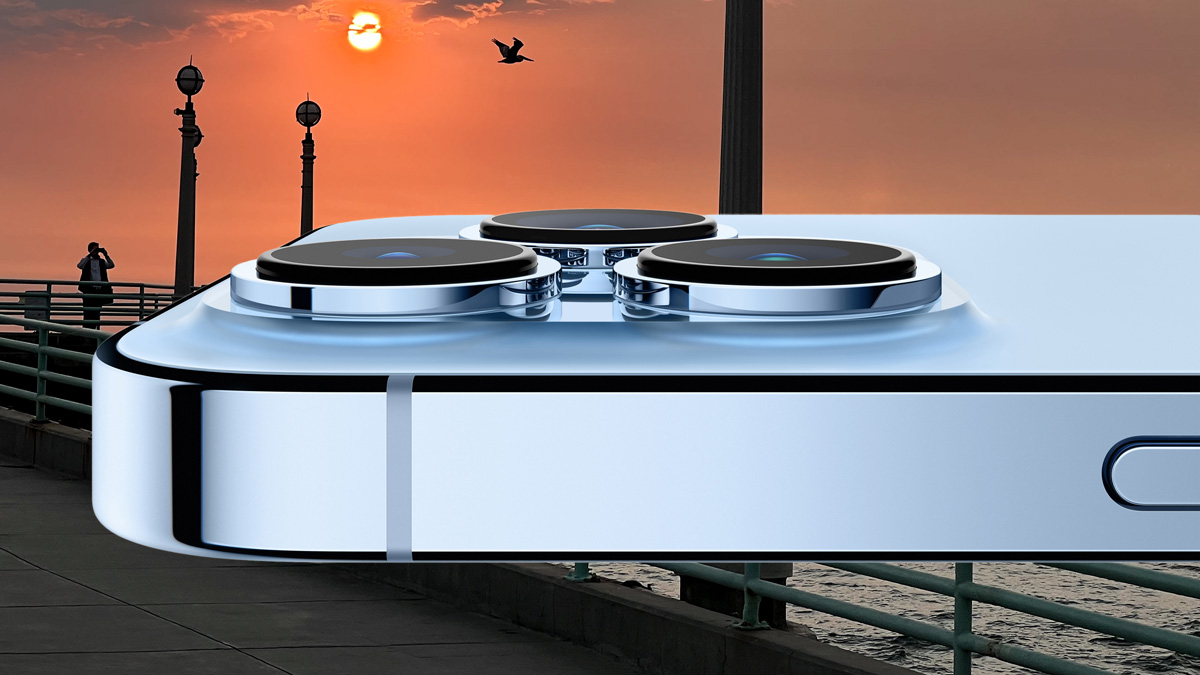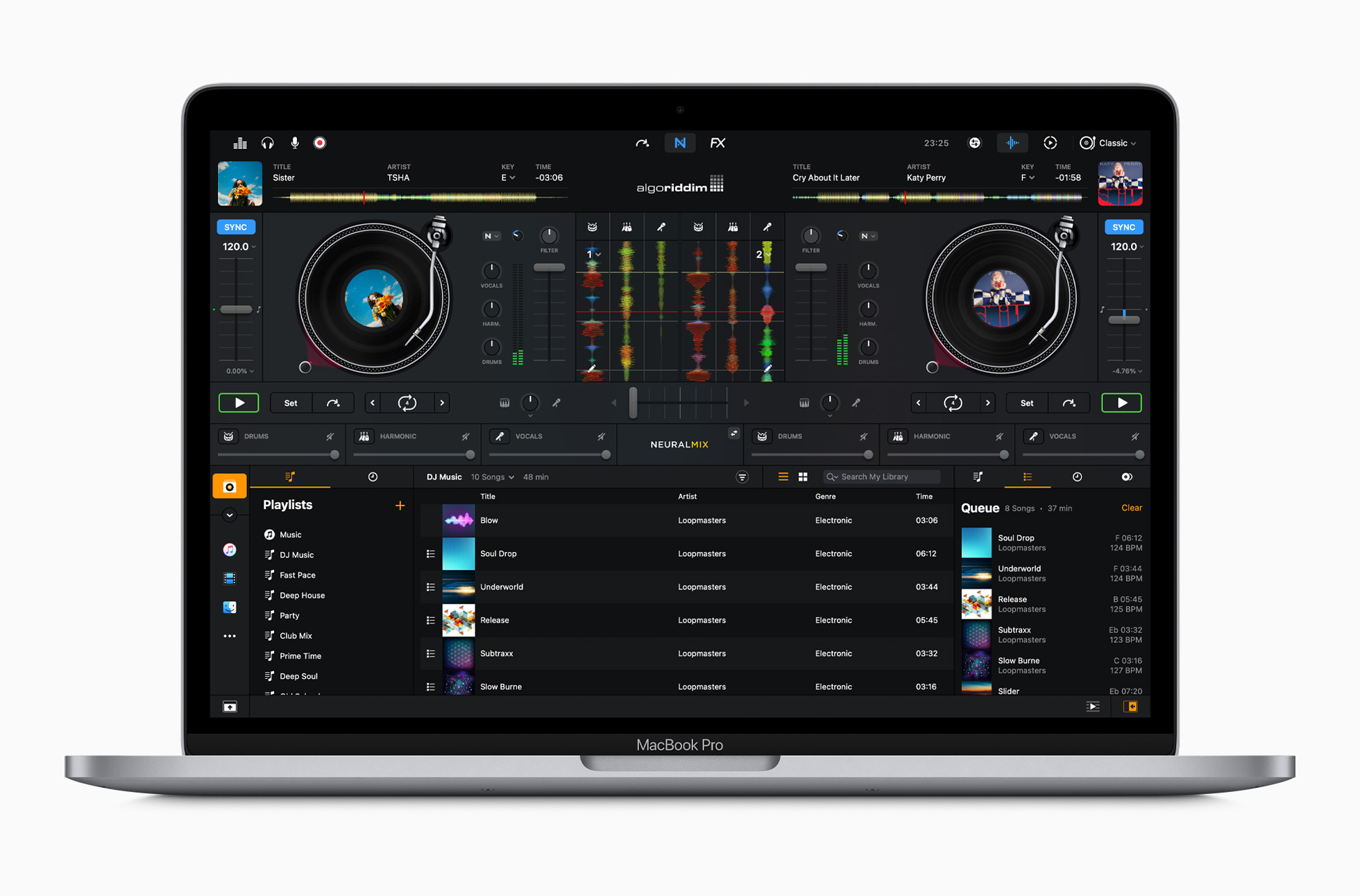Apple
Oh. So. Pro.: Apple’s new slogan for iPhone 13 Pro is both Obvious and an Infinite Enigma
Published
2 years agoon

Above: Photo Collage / Apple / Lynxotic
Simple, to the point, yes. But what is the point?
Why go pro? Well, anyone who uses an iPhone in a work or business context can clearly benefit from the power under the hood (A15), and the new, better ways to communicate (messages, FaceTime, email improvements, etc) and manage information exchanges (notes upgrade, photo searching, live text, etc.).
And, let’s be honest, who that uses an iPhone for business doesn’t always want the newest and best? And who actually does have the funds to pay the lofty prices? On the face of it the slogan and the superficial idea it proposes is a simple extension of the demographics of Apple’s customer base.
The motto iPhone 13 has received is just the newest in a venerable pantheon of slogans created for some of the most successful and forward thinking ad campaigns. There are even those that feel that steve jobs had even more talent for choosing a marketing strategy than for anything else. Starting with the now historic super bowl ad for the original mac, which to this day is heralded as one of the best one-minute commercials ever Apple has ever since been known as a cult-like company that took an unfamiliar product, at a time when desk-top computers were virtually non-existent and sold them as something that could magically bestow a better life, and even contribute to the building of a better world.
The ad told the story of the apple home computer as the next big thing, and cast the macintosh product line as a true hero that would stand up to a projected story of corporate tyranny, embodied in IMB, Apple’s rival at the time. This was potentially the first tv commercial to sell a corporate identity, the Apple story as a cultural story, rather than as the first low cost microcomputer system.
Based on George Orwell’s dystopian novel, 1984 the ground breaking ad had one of the most unusual business mottos as the closing credit; “On January 24th Apple Computer will introduce Macintosh. And you’ll see why 1984 won’t be like ‘1984.’ “
Though the commercial has been considered a huge success ever since, the rest of the story is that the general population was not quite ready for apple’s iconic game-changer at the time, and the high price of the first product version was, responsible for poor sales ultimately a commercial disaster.
Nevertheless, the technical revolution of the product, including the first graphic command interface, would eventually create millions of Apple fans, imbue the public with a sense of identification with the company as underdog, and the commercial would gain its rightful place as the best marketing tool of that era.
Decades later the legacy would be part of the road that Apple took to becoming a profitable company and eventually one of the world’s most powerful global enterprises.
The second, and possibly even more influential and best marketing campaigns would be ‘think different’ slogan, launched on August 8th, 1997.
This motto and the ad campaign that famously followed represented a whole new vision for not only how to promote the brand and increase sales without featuring a single Apple product, but also served to introduce apple fans to the idea of a different kind of change.
It signaled a new direction, both internally with the return of ad agency TBWA Chiat/Day after a ten year hiatus, but also making clear reference to the break from the downward trajectory that company had faced in the absence of Steve Jobs between 1985 and 1997, both leaving and returning on the same day, September 16.
This eternally iconic campaign with it’s clever yet engaging slogan, emphasized the concept of iconic misfits, and how they, as the “crazy ones” would embrace new ideas and change the world.
‘Think different’ ultimately became the most successful and famous tagline in the history of Apple. The text from one of the first commercials in the campaign had a brilliant script, read by Richard Dreyfuss;
“Here’s to the crazy ones,” Dreyfuss intoned. “The misfits, the rebels, the troublemakers — the round pegs in the square holes. The ones who see things differently.”
Among the 17 great historical icons whose images were used in the first one minute ad, meant to link Apple innovation to the worlds all time great 20th century thinkers and doers, were; Albert Einstein, Pablo Picasso, Martin Luther King, Bob Dylan, Amelia Earhart, Mahatma Gandhi, Maria Callas, Richard Branson, Muhammad Ali, Jim Henson (and Kermit the Frog), Ted Turner, Thomas Edison, Martha Graham, Frank Lloyd Wright and John Lennon (with Yoko Ono).
Subsequent to the launch other tv ads as well as print, posters and billboards featured a variety of these plus additional icons.
Here’s what Apple says about the A15 Bionic chip in the iPhone 13 Pro:
With 5-nanometer technology, A15 Bionic — the fastest chip in a smartphone — features a new 5-core GPU in the Pro lineup that brings the fastest graphics performance in any smartphone, up to 50 percent faster than the leading competition, ideal for video apps, high-performance gaming, and the slate of new camera features.
On the surface then, it’s all good, the three terse words evoke the natural and logical, it’s a simple, clever slogan that targets the upper “Pro” demographic with an expensive but really cool device.

Lurking beneath is a mountain of meaning that connects to decades of research and innovation at Apple
But, wait, all the new iPhone 13s, along with any that use iOS 15, share many of the same “Pro” features, and thus we must all adapt to the embarrassment of riches, on some level.
Many questions arise; with “Pro” cameras (3x +) and software that leverages advanced chips, the neural engine, machine learning to extend our senses further in multiple directions at once, is there more going on here than meets the (camera’s) eye?
neural
Here’s more from Apple about the A15 Bionic chip in the iPhone 13 Pro:
A faster Neural Engine in A15 Bionic, new ISP, and advancements in computational photography power the all-new camera features on iPhone 13 Pro and iPhone 13 Pro Max. Photographic Styles allows users to bring their personal photo preferences to every image while still benefitting from Apple’s multiframe image processing.
If we are all aspiring toward a Pro iPhone for our Pro digital lives are there trade-offs and lurking benefits that are not as obvious as better photos, videos and more digital eye candy? If we are all destined to be Pro then is Pro destined to be just “normal”?

The evolution from analog to digital to a pre-metaverse life
Work from Home has now been dubbed “Fully Distributed Workforce”, meaning work from anywhere. This is conceivable due to the accelerated transition to an economy where everything is digital, computerized and removed from atoms (other than robot assisted tasks like building Teslas, etc).

Less than total, but more and more pervasive, the lives we lead are not enhanced by our cyborg extensions (previously known as “smart phones”) but rather the life itself takes place in this soon to be enhanced alternate reality.
The new 6-core CPU with two new high-performance cores and four new high-efficiency cores, is up to 50 percent faster than the competition and handles demanding tasks smoothly and efficiently. A new 16-core Neural Engine capable of 15.8 trillion operations per second enables even faster machine learning computations for third-party app experiences, as well as features like Live Text in Camera with iOS 15. And major advancements to the next-generation ISP provide improved noise reduction and tone mapping.
Long before a video-game-like AR and VR metaverse emerges, we are already experiencing a large part of our waking hours, both for work and “leisure” through the portal of our devices and the internet.
In many ways, this is so obvious as to need no mention, and yet, what is a Pro life in this digital universe worth compared to a “non-Pro” version of the same life?
The new Apple silicon hardware / software and all eco-system transition – already long underway and projected to converge into an early stage Kurzweilian Singularity of Apple in around 2024, is what will determine the nature of existence for the rest of the decade.

With software, hardware, and now AI and machine learning, all having a continuous and presumably infinite upgrade cycle, isn’t that like a kind of eternal life, at least for our digital selves, if not for our biological baggage?
Enter the iPhone 13 Pro; suddenly the experiences we wear as we take part in the fully distributed workforce sparkle and dazzle and become more effective and pleasurable to navigate.
The human link in the chain, absorbing, adapting, learning, digesting all these upgrades and improvements and how they change our work and play is a game of catch-up that will never end.
At this moment, the new “memories” feature in photos, combined with the new cameras in the iPhone 13 Pro Max are going to change how I view my immediate past (as reflected in the “memories” created by AI and machine learning forays into my ever growing photo library).
And that will make my ancient iPhone 5 photos seem as antiquated as a polaroid from 1984. And how will the current, insanely crisp, macos lensed food snaps look next to my “only great” iPhone 12 Pro portrait mode plates?
Not that these are weighty problems or even musings, but when your world is in the pre-metaverse of the Apple ecosystem in 2021, these thoughts do arise.

Are we all heading to a life where everything is Pro?
While, on the one hand, the goal of eternally enhanced digital communication is a very useful and important one, a possibly essential upgrade to our species just in time to prevent a climate apocalypse, on the other hand, how will the fully distributed workforce look once we are all Pro.
The transition from brink & mortar, skin, sinew and gray matter to a digitally enhanced cyborg communication center in our pocket is at a very early stage, to be sure.
At the same time things, including the relentless Apple upgrade cycle are going very, very fast, indeed.
If we are all destined to measure our contributions to work and society based on enlarged, enhanced communication capabilities, that enhancement will include what was once called “multi-media”. Hi resolution photos and videos, video calls with portrait mode, hell, feature films we shoot on the weekend, all the bells and whistles that once seems like a “hobby” for pleasure and in a rare case profit, all will now be central to our very existence.
Starting now, we are all Pro. The brightest and best will be more, they will be Oh. So. Pro.
Apple @ Lynxotic:
- Apple Reveals new MacBook Pro Models, Mac Mini: all with M2 and M2 Pro Chips
- Fitness with Apple Watch: A Day in the Life of Highly Motivated Ring Closers
- The Vision of Steve Jobs for the Future of Apple has Barely Begun to Emerge
- Best thing about the new Mac Studio Display? It’s Optional with the Mac Studio Desktop…
- iPhone Subscription Service Could Launch This Year according to Gurman
Find books on Music, Movies & Entertainment and many other topics at our sister site: Cherrybooks on Bookshop.org
Enjoy Lynxotic at Apple News on your iPhone, iPad or Mac.
Lynxotic may receive a small commission based on any purchases made by following links from this page


